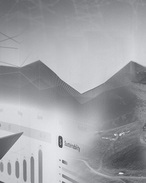Yesterday the company announced a farm-in agreement for the Harris Reward prospect in north-west Tasmania.
However, the future management direction of the company is under a cloud as Mark and Joseph Caruso, who have emerged with a 6.7% stake in the company, have called for an extraordinary shareholders meeting. They want the incumbent board, led by Peter Topham, removed and replaced by themselves and Wayne Loxton.
But for the moment it is business as usual. In its latest package, the initial area of interest is the 250sq.km Dooloo Creek tenement, located between Gladstone and Monto in Queensland. The tenement and the area surrounding it are the most heavily mineralised in eastern Queensland, according to the company.
North discovered the previously unrecognised 4km x 2km Dooloo Creek gold-copper prospect in 1997 and spent $1.5 million on geological mapping, geochemical sampling, ground and aerial geophysics, costeaning and limited drilling.
It identified the prospect as an anomalous gold-copper mineralisation in volcanic host rocks with 75% of all rock chip samples collected in the area containing detectable gold, with the highest recording being 414 grams per tonne.
Mineral Commodities is waiting for a suitable rig to become available within the next few weeks before it commences a major drilling program in the Base Hill Station area of Dooloo Creek, as well as two holes near the Bindy Hill to the south-west of Base Station Hill, which exhibits similarities.
“The highest-grade gold-sulphide veins found so far at Dooloo Creek occur adjacent to this hill,” the company said.
Horton Geoscience Consultants and Energy Minerals hold the tenement package in equal shares. At Dooloo Creek, Mineral Commodities can earn up to 51% for an expenditure of $1.5 million over three years, with a minimum expenditure commitment of $175,000.
In the other two areas of the tenement it can earn up to 51% for expenditures of $250,000 in each instance over three years.
Historic exploration of these two areas is less advanced than Dooloo Creek, but the same host rock types are present as in the Mt Morgan model, the company said.
























